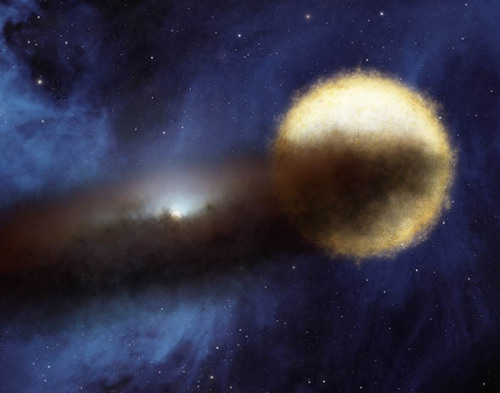Described by the astronomers who worked on it is a "terrifying image, like something from a Tolkein book," the exact nature of this dark object is still essentially unknown. It's almost certainly a disk of some material, seen edge on. This disk is orbiting the central star, Epsilon Aurigae and causing the periodic dimming seen for almost 200 years... but what exactly might lurk inside the disk is still unknown. Theories range from it being a smaller star, swathed in dust, to a stellar mass black hole in the system.
So this, then, is another of those cases where answering one question leads to an awful lot more questions. Fascinating questions.
There's more on the story over at Universe Today!
EDIT--
Also, some deliciously fine details including some light curves, courtesy of Cosmic Variance (seeing as evidently, Sean Carroll was one of the scientists on the team), and a nice artist's impression from NASA JPL!

No comments:
Post a Comment